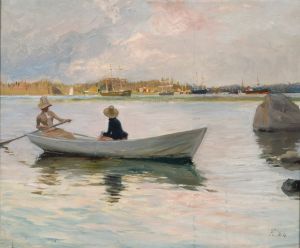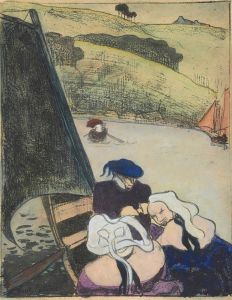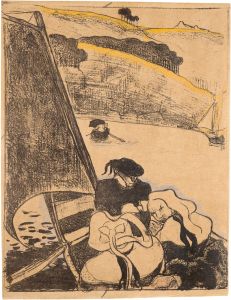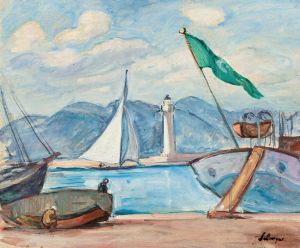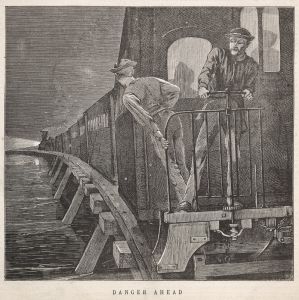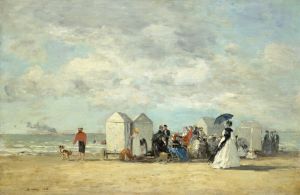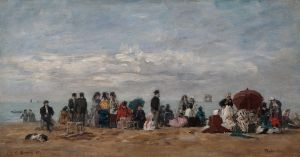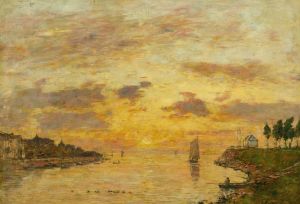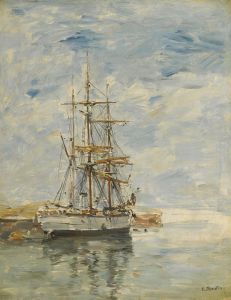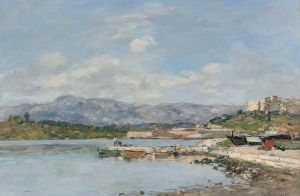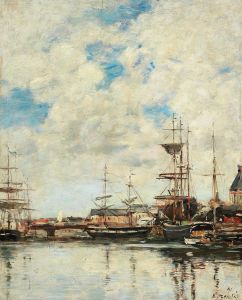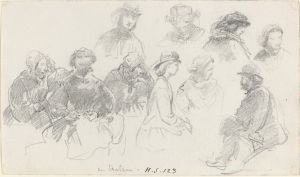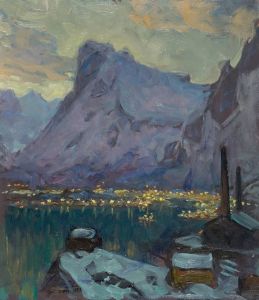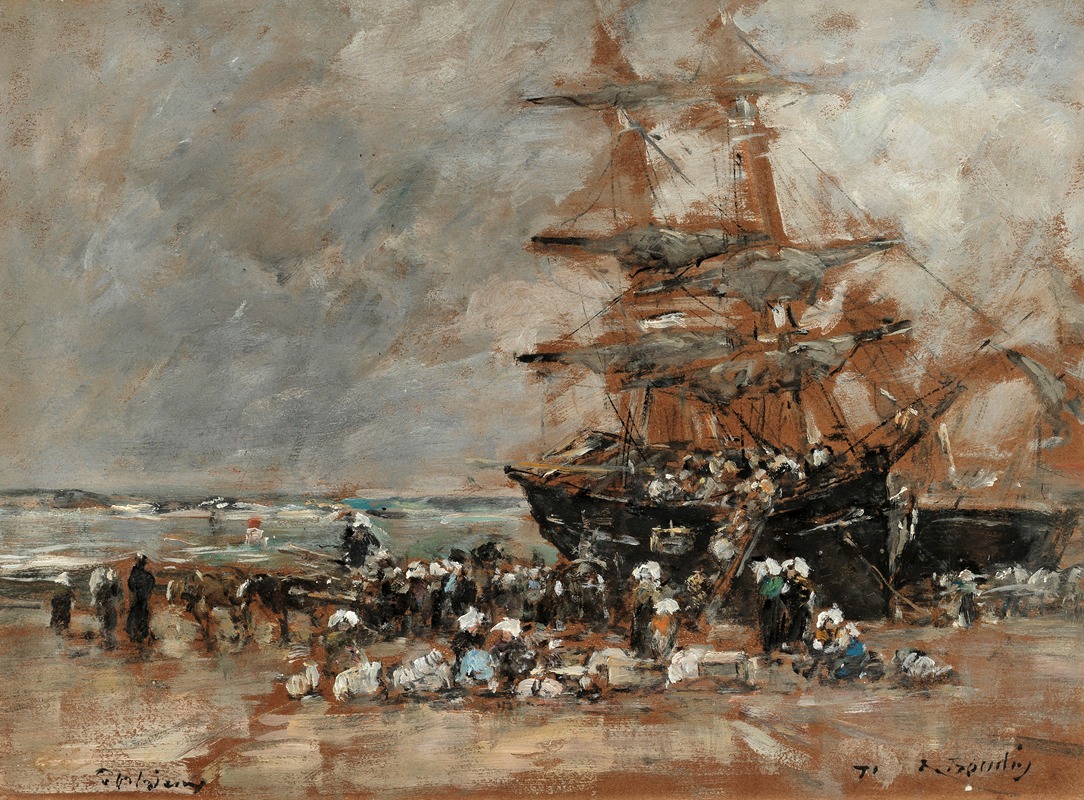
Retour du Terre-neuvier à Portrieux
A hand-painted replica of Eugène Boudin’s masterpiece Retour du Terre-neuvier à Portrieux, meticulously crafted by professional artists to capture the true essence of the original. Each piece is created with museum-quality canvas and rare mineral pigments, carefully painted by experienced artists with delicate brushstrokes and rich, layered colors to perfectly recreate the texture of the original artwork. Unlike machine-printed reproductions, this hand-painted version brings the painting to life, infused with the artist’s emotions and skill in every stroke. Whether for personal collection or home decoration, it instantly elevates the artistic atmosphere of any space.
Eugène Boudin's painting Retour du Terre-neuvier à Portrieux (translated as Return of the Newfoundland Fishing Boat to Portrieux) is a work by the renowned French artist, who is often celebrated as one of the precursors of Impressionism. Boudin, born in 1824 in Honfleur, Normandy, was known for his mastery in capturing coastal scenes, skies, and the interplay of light and atmosphere. This particular painting reflects his deep connection to maritime themes and his ability to depict the daily lives of seafarers and coastal communities.
The artwork portrays the return of a fishing vessel from Newfoundland to the port of Portrieux, a small coastal town in Brittany, France. During the 19th century, fishing expeditions to Newfoundland were a significant part of the maritime economy for many French coastal towns. These voyages were arduous and often dangerous, as fishermen braved the Atlantic Ocean to harvest cod and other fish. Boudin's painting captures the moment of the vessel's return, likely emphasizing the relief and activity surrounding the homecoming of the fishermen.
Boudin's characteristic style is evident in this work, with his focus on natural light and atmospheric effects. He was particularly skilled at rendering the sky, which often occupies a significant portion of his compositions. In Retour du Terre-neuvier à Portrieux, the sky and sea likely play a central role, reflecting the changing weather and the mood of the scene. His use of loose brushstrokes and subtle color variations creates a sense of immediacy and realism, hallmarks of his approach to painting en plein air (outdoors).
The painting is an example of Boudin's dedication to documenting the lives of ordinary people and their relationship with the sea. His works often depict ports, beaches, and harbors, showcasing the daily activities of fishermen, merchants, and travelers. This focus on everyday life, combined with his innovative techniques, influenced later Impressionist painters, including Claude Monet, who considered Boudin a mentor.
As of now, specific details about the current location or provenance of Retour du Terre-neuvier à Portrieux are not widely documented. However, Boudin's works are held in numerous prestigious collections worldwide, including the Musée d'Orsay in Paris and the National Gallery of Art in Washington, D.C. This painting, like many of his others, serves as a testament to his skill in capturing the essence of coastal life and his significant contribution to the evolution of modern art.





